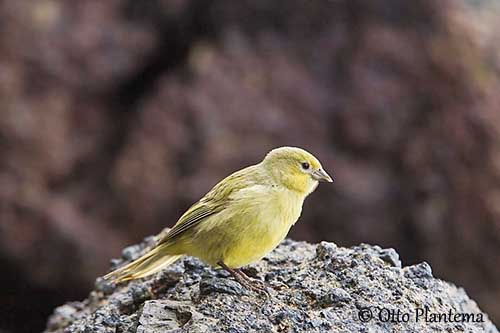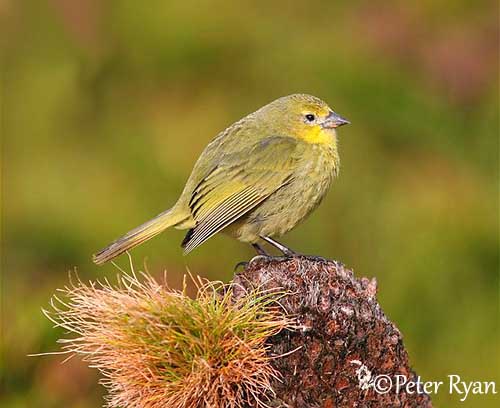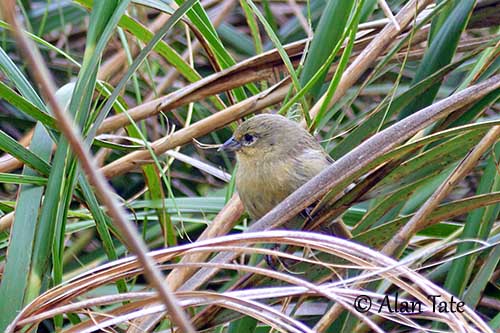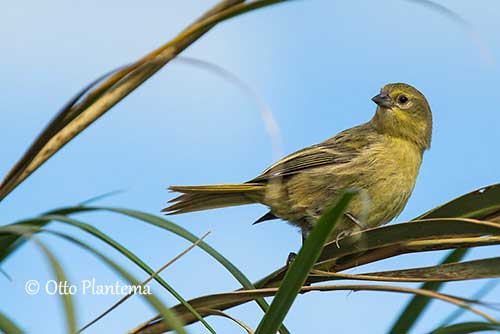
Fr: Nésospize du Quest
Ang: Nightingale Island Finch
All: Questammerfink
Esp: Yal de la Nightingale
Nd: Nightingalegors
Photographers:
Otto Plantema
Trips around the world
Peter Ryan
The Percy Fitzpatrick Institute of African Ornithology
Alan & Ann Tate
AA Bird Photography
Text by Nicole Bouglouan
Sources:
HANDBOOK OF THE BIRDS OF THE WORLD Vol 16 by Josep del Hoyo- Andrew Elliot-David Christie – Lynx Edicions – ISBN: 9788496553781
Molecular Phylogenetics and Evolution – The origin of finches on Tristan da Cunha and Gough island, central South Atlantic Ocean
Peter G. Ryan, Luke B. Klicka, Keith F. Barker, Kevin J. Burns
SCIENCE/AAAS
Ecological Speciation in South Atlantic Island Finches
Peter G. Ryan, Paulette Bloomer, Coleen L. Moloney, Tyron J. Grant and Wayne Delport
BirdLife International (BirdLife International)
Red List of Threatened species
SORA Searchable Ornithological Research Archive (Blair O. Wolf)
Nightingale Island Finch
Nesospiza questi
Passeriformes Order – Thraupidae Family
INTRODUCTION:
The Nightingale Island Finch is often considered close to both races « acunhae » and « fraseri » of the Inaccessible Island Finch, but genetic studies show independent evolution on each island.
This species is threatened by accidental introduction of predators with the visits of islanders and fishing vessels operating in Tristan waters. The Nightingale Island Finch is abundant but it has extremely small range and is currently classified as Vulnerable.

RANGE:
The Nightingale Island Finch occurs on Nightingale Island and offshore islets of Alex (Middle) and Stoltenhoff, in South Atlantic Ocean.
HABITAT:
The Nightingale Island Finch frequents a variety of habitat types, and can be seen from the rocky shoreline to the high mountains. However, it is usually more abundant in tussock grassland (Spartina) and areas dominated by Scirpus in the centre of the island.
CALLS AND SONGS: SOUNDS BY XENO-CANTO
The Nightingale Island Finch’s contact call is a chipping call, also used as alarm when the Brown Skua is flying above the territory. This call is given by both sexes.
The male’s advertising song is a high-pitched, monotonous and repeated “whit-wheu whit-wheu…” whereas the female utters softer sounds, often querulous whistles.

REPRODUCTION OF THIS SPECIES:
The breeding season occurs between November and January.
The Nightingale Island Finch usually nests among the thick vegetation such as sedges (Cuperaceae), grasses and sometimes ferns. The cup-shaped nest is placed low among the vegetation.
The female lays 1-2 pale blue eggs with fine dark brown markings.
No more information.
PROTECTION / THREATS / STATUS:
The Nightingale Island Finch is abundant on Nightingale Island, and fairly common on Middle and Stoltenhoff islands.
On Nightingale, the population is estimated at about 4,000 pairs, giving an overall estimate of 9,000 mature individuals. This population is thought to be stable. The population of Middle and Stoltenhoff does not exceed 500 pairs.
The Nightingale Island Finch is always at risk from accidental introduction of the usual predators of eggs and chicks due to visits by islanders and fishing vessels.
This specie sis currently classified as Vulnerable.

BEHAVIOUR IN THE WILD:
The Nightingale Island Finch forages on the ground and in the vegetation, feeding on seeds, berries and some invertebrates.
This species is a small-billed dietary generalist, feeding usually on small seeds from Scirpus and Spartina plant species.
Little is known about courtship and breeding behaviour of this species. The territorial male gives advertising calls and the territory is well-defended against other males.
There is no evidence of hybridization with the Wilkin’s Finch also present on Nightingale Island.
On the basis of the morphology of this bird, it is suggested that they do not perform any movement between the islands.

DESCRIPTION OF THE BIRD:
Biometrics:
Length: 16-18 cm
Weight: 24-29 g
The adult male has yellow-olive head and upperparts, with narrow dark brown streaks. On the wings, the flight feathers are mostly grey-brown with yellowish fringes. The tail is yellow-olive at base, and grey-brown towards the tip.
The underparts are yellow-olive, with brighter yellow throat.
On the head, face and lores are pale grey. The conical bill is blackish. The eyes are dark brown. Legs and feet are dark grey.
The female resembles male but she is slightly smaller, and with duller and slightly more streaked plumage.
Juvenile and immature resemble female, but with buffy-brown and more heavily streaked plumage.
